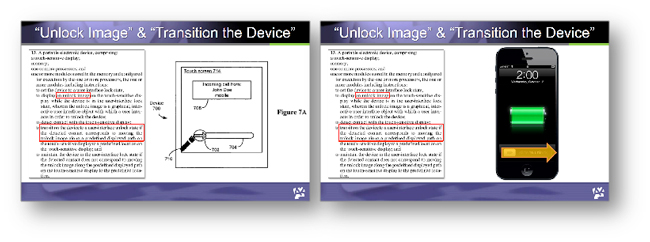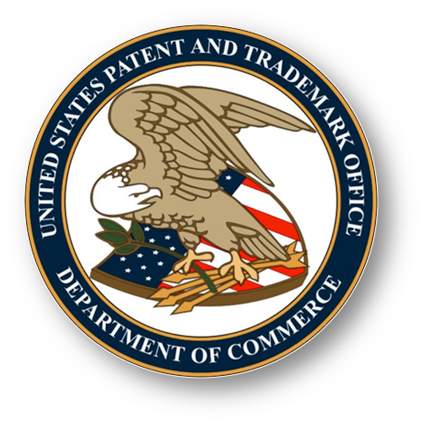by Ryan H. Flax, Esq.
(Former) Managing Director, Litigation Consulting
A2L Consulting
How do you win in oral argument before USPTO Administrative Patent Judges in an Inter Partes Review, Post-Grant Review, Business Method Review, or a plain-old appeal from a final rejection hearing? You do it in the same way you win at trial – by being as persuasive as you can be. But, unlike in a district court trial, you’re only going to have an hour or less with the PTAB to make your case in oral argument, so it’s as if everything comes down to a terrific closing argument.
You win at trial and at any of these hearings by having any combination of two of: (1) a great lawyer; (2) great facts; and (3) a great presentation. Assuming my audience here consists only of great patent lawyers and that if you had great facts you’d not be at the oral argument stage before the PTAB, the question is – how do you have a great presentation? You do it by educating your audience in a way that they prefer to learn and research shows that chances are good that at least two judges on your panel of three will prefer to learn visually. See, e.g., William C. Bradford, Reaching the Visual Learner: Teaching Property Through Art (for download).
Your oral argument at any of the above-identified PTAB hearings is essentially your closing statement for the case. It’s about the same length as a typical closing argument, it comes at the end of the case, and it will be just you standing in front of the decision-making audience trying one last argument to sway them. When would you consider making a closing argument at trial (or a Markman hearing oral argument for that matter) in a patent litigation without showing the judge or jury graphics and evidence electronically to visually support your arguments? Never – so don’t overlook this powerful tool at the U.S. Patent and Trademark Office either.

If the USPTO Trial Board suggests they don’t want “fancy” graphics, does this mean not to use any? NO, of course not. Just take a look (below) at how the USPTO itself explained the sequence of procedural events for the new post-grant procedures under the AIA:

So, what is that? It’s a graphic, a demonstrative, a timeline. Why did the USPTO publish this timeline in its Trial Practice Guide (Fed. Reg. Vol. 77, No. 157 (Aug. 14, 2012)? Because they knew that the subject matter was confusing, even for patent attorneys, and that a graphic (demonstrative) would make it clearer.
The first oral hearing before the new PTAB in a post-grant proceeding was held April 17, 2013 in Case No. CBM2012-00001 (SAP America Inc. and Versata Development Group Inc.) challenging U.S. Patent No. 6,553,350 (a business method review case).  In that hearing, each party produced demonstrative exhibits (you can see them at the previous link and at this one; they’re not too impressive or professional looking, and they don’t adhere to the fundamentals of visual information design important to litigation graphics, but at least they’re there and were used) and focused their arguments and demonstratives on technical questions relating to §101 (patent eligibility) issues. So, from the very beginning, demonstratives and graphics have shown themselves to be an essential component to PTAB oral argument.
In that hearing, each party produced demonstrative exhibits (you can see them at the previous link and at this one; they’re not too impressive or professional looking, and they don’t adhere to the fundamentals of visual information design important to litigation graphics, but at least they’re there and were used) and focused their arguments and demonstratives on technical questions relating to §101 (patent eligibility) issues. So, from the very beginning, demonstratives and graphics have shown themselves to be an essential component to PTAB oral argument.
Oral arguments are governed by rule 37 C.F.R. § 42.70 – any party can request a hearing on issues raised in papers filed during the case. Demonstrative exhibits must be served at least 5 days before the argument. While the Trial Board recommends foregoing “fancy” exhibits, professionally crafted, well designed, and thematically focused exhibits are essential to winning. You should provide both a bound exhibit book, tabbed so key exhibits are easy to locate, and an electronic visual presentation to support your oral argument. If any special equipment is needed, e.g., a projector and screen, you should contact the Board paralegal well in advance of your argument (at (571) 272-9797).
Let’s see what experienced practitioner Robert Greene of Stern Kessler Goldstein & Fox PLLC has to say about using demonstratives before the PTAB:
Under the AIA, new arguments cannot be presented at an oral hearing. See 35 U.S.C. §§ 316(a) and 326(a); 37 C.F.R. § 42.70(a). Oral argument is limited to issues “raised in a paper” – “[a] party may rely upon evidence that has been previously submitted in the proceeding and may only present arguments relied upon in the papers previously submitted. No new evidence or arguments may be presented at the oral argument.” Trial Practice Guidelines, Vol. 77, No. 157, 48768 (Aug. 14, 2012). Further, under the rules, demonstrative exhibits to be used at oral argument must be exchanged at least five days before the hearing and filed with the Board no later than the time of the hearing to ensure they comply with the law and rules. Id. at § 42.70(b).
These rules present an opportunity and somewhat of a necessity to add graphics to your briefing with the intent of laying the foundation for later turning them into demonstrative exhibits for your hearing. My suggestion is to add smaller (so you don’t interfere with the strict page limits), but intelligible graphics to your brief, inserted into the text at the appropriate points, and add the full-sized (page-sized) graphics as exhibits to your brief. Thus, you will have already thought out your hearing presentation’s visual component and laid its foundation without worry about the “new argument” problem.
In CBS Interactive Inc. v. Helferich Patent Licensing, LLC, IPR2013-00033, Paper 118, the PTAB clarified what a party to a post-grant hearing may include in its demonstrative slides, stating that “figures, charts and diagrams may serve as visual aids,” but “written text, setting forth various statements, characterizations, and assertions go beyond serving as visual aids, as they constitute additional briefings themselves.” So, lay that foundation and tune your graphics to limit text (which is what we at A2L suggest in every situation where graphics are used anyway).
With filing fees for Inter Partes Review at $14,000, Ex Parte Reexam at $12,000, Post-Grant Review at $18,000 (or more), it is easy to justify building a professionally supported visual presentation component into your post-grant case budget. With the high stakes of these types of proceedings (not the least of which is the estoppel that applies to the defeated), patent attorneys need to be as persuasive as possible and visual support for oral argument is a key to that persuasion.
Other articles related to patent litigation and the Patent & Trademark Office:
- Litigation support and litigation graphics firm located near the Patent & Trademark Office and EDVA in Alexandria, VA
- Free E-Book Download: The Patent Litigator's Toolkit
- Free Patent Litigation Webinar - Using Litigation Graphics in Patent Litigation
- The 5 Biggest Issues in Patent Law Right Now
- 11 Tips for Preparing to Argue at the Federal Circuit
- 11 Tips for Winning at Your Markman Hearings







Leave a Comment